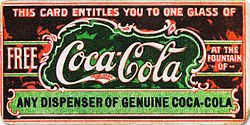Disclosure: I am Vice President of Sales & Influencer Marketing at BlogHer. Advertising and social media marketing programs are a significant source of revenue for my company and for the bloggers in our advertising network.
Content marketing. It is the hot topic of 2014. And like “native advertising,” there are as many definitions of and opinions about it as there are marketing pundits on the interwebs.
Far be it from me to back away from a challenge.
Linguistically, content marketing simply is using “content” to market products and services. But what exactly is this thing called “content.” Channeling Inigo Montoya (http://en.wikipedia.org/wiki/Inigo_Montoya), it is entirely possible that this word does not mean exactly what we think.
Let’s stay simple to start. Brands are using “content” as distinct from “advertising” to promote their products. This can take many forms:
- sponsored posts — on blogs and mass media sites (advertorial)
- sponsored editorial
- in native ad units
- editorial on brand sites
Sponsored posts often integrate the brand into a story, not dissimilar from old style advertorial, but quite a lot of this content is just, well, content brought to you by a sponsor, either intermediated by a publisher, like Forbes BrandVoice or Mashable or direct, like Coca-Cola’s new content site, Coca-Cola Journey.
Example of integration of sponsored editorial: Is Your Cash Working for You?, sponsored by American Express
On some level, this is the fulfillment of the promise of the World Wide Web — build a terrific website and your customers will come to you, with the twist that we finally get that reading about the products isn’t the attraction. It’s useful and when you are ready to buy, critical, but product websites are selling tools, not marketing tools. They matter once you are in the consideration phase.
What attracts the consumer is storytelling.
And now brands are joining their customers as the publishers of content. If 2004 was the beginning of the rise of the citizen journalist, 2014 may be the birth of the brand journalist. This has implications for the quality of the news we consume, and already has had an impact on mainstream media. Advertorial content is increasingly front and center on mainstream media sites, with varying degrees of disclosure. More on that another day.
The long term impact of this shift on the independent, read objective, journalist remains to be seen but the shift to brands as the direct funder of our news feed is already exerting a tremendous pressure on prices.
The quality of online content is also at some risk… The costs of feeding a machine that relies on new stories every day is why newspapers began selling advertising in the first place. Unlike an advert, which is “create once, play many,” and works because of its simple, entertaining, purchase-oriented message, content marketing requires new stuff every day. The temptation is strong to sacrifice quality for volume.
But simply shoving a lot of words into a funnel isn’t going to have the long term effect we want. We need deeply engaging content that will connect consumers with our value proposition in a meaningful way and encourage them to consider our product or service. Bottom line, much as I love the quizzes, and top 10 lists, their impact is fleeting when it comes to long term engagement.
Collectively, we –marketers, consumers and publishers — need to take a step back and commit to creating and supporting GOOD content.
What’s good content in this context? It’s well-written content that engages the audience with a story, and connects with the brand message in some fashion. It can be tightly integrated like a review, loosely integrated like many sponsored posts or simply aligned editorial brought to you by the brand, with a brand message at the end of the post or article.
While brand marketers can, and should, produce material to feed the content marketing machine, the best stories will come from the community. No matter how well we write, we shouldn’t try to copy community-created content. It is extremely difficult to excise our passion for our brand from the story, and, as has been proven time and again, with good stories and bad, there is nothing more powerful than an engaged consumer.
Use your marketing passion to create the brand material for your content funnel that consumers rely on for more information about a product – micro sites, Facebook pages, Pinterest “catalogs,” and help your customers channel their passion into storytelling. Find and nurture your evangelists. Let them create the content and stories that matter with your support, either directly sponsored by you, or syndicated for re-use. A story may not be new to you, but it will be new to someone.
Personally, I’m excited about the potential for content marketing, and true partnerships between companies and their customers, brands and bloggers, to tell the stories that connect us with each other and with the brands we love. It’s what I’ve been hoping this interweb would morph into since I started writing about the space in 2004.
Here are some oldies but goodies from my archives on the topic of the brand-blogger connection:
- https://getgood.com/roadmaps/2008/08/13/the-secret-sauce-for-the-perfect-pitch/
- https://getgood.com/roadmaps/2009/01/11/the-importance-of-value-and-values-in-social-media/
- https://getgood.com/roadmaps/2009/03/18/blogger-outreach-shared-values-and-cotton-swabs/
- https://getgood.com/roadmaps/2009/02/23/engaging-with-your-community-your-customer/
Other writers who touch on this topic that you might enjoy: Rebecca Lieb, Christopher S. Penn.








